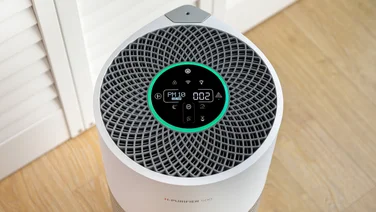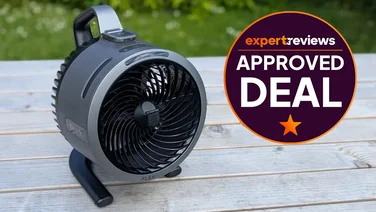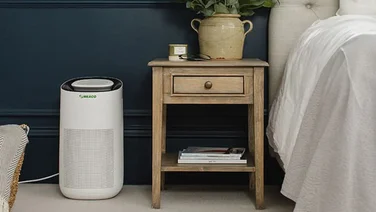To help us provide you with free impartial advice, we may earn a commission if you buy through links on our site. Learn more

Your home can sometimes harbour unpleasant odours from cooking, pets, and even damp. Opening windows can help but it’s usually a temporary fix, while air fresheners typically only mask smells rather than get rid of them entirely.
Air purifiers, on the other hand, are designed to filter airborne particles and volatile organic compounds (VOCs) – the offenders behind those lingering odours – from the air. The removal of these offers a more long-term solution to maintaining a fresh and inviting home environment.
How can an air purifier remove bad odours at home?
Air purifiers are often lauded for their ability to capture allergens and particulate matter, but as a byproduct of their sophisticated filtration systems, they also play a significant role in combating unpleasant odours at home.
As such, the key to an air purifier’s odour-removing capability lies in their specialised filters. Chris Micheal, Managing Director of Meaco, says: “A HEPA filter can help with smoke smells by removing the physical particles from the air. Many smells, though, are chemically produced (commonly known as VOCs), and you need a good charcoal filter to remove those.”

In terms of how this works, Dyson’s Environmental Care Engineer, Shawn Navarednam explains: “When air passes through the purifier, activated carbon absorbs and retains volatile organic compounds (VOCs), pet smells, cooking odours, and other airborne chemicals responsible for unpleasant smells.
“HEPA filters, used in many air purifiers, primarily capture solid particles like dust or pollen, but when combined with activated carbon, the purifier can tackle both particulates and odours. By continuously cycling and cleaning the air, an air purifier reduces the concentration of odorous substances in a room, resulting in fresher, cleaner-smelling air. This makes air purifiers especially helpful in kitchens or in homes with pets.”
What sort of smells can an air purifier remove?
Air purifiers that feature the activated carbon filtration mentioned above are known to be effective against a wide array of common household odours. This includes the smells associated with pets such as urine, lingering cooking odours from dishes like fish or curry, and the damp, earthy smells linked to mould or excessive moisture.
They can also reduce the chemical fumes and VOCs emitted from materials like a fresh lick of paint, new furnishings like a sofa or chair, as well as cleaning products like bleach. Smoke from cigarettes, fireplaces, or even burnt toast is another odour that air purifiers can help to reduce, thanks to their ability to trap its gaseous components.
It’s important to understand the limitations of air purifiers, however. They don’t directly address the source of an odour. For example, while an air purifier can help with cooking smells, they don’t compensate for inadequate kitchen ventilation.
When is an air purifier unsuitable and what should I do instead?
Similarly, air purifiers may struggle to completely eliminate odours that have soaked into materials such as carpets, curtains, or walls over time. An air purifier can only tackle the airborne molecules, so a thorough cleaning or remediation of the affected materials might be necessary in order to completely remove an odour from your home.
“An air purifier is a supplement, not a self-sufficient solution, meaning you still should remove the source of pollution,” Sergey Nikolin explains. “If you have consistently high humidity, bad ventilation, if you never clean, never change AC filters, or keep windows open when there’s pollen all around, using an air purifier will not help much and you should fix the root problem first. If you’re dealing with a major issue like construction dust or fire smoke, you’d better go with an air scrubber that pulls in dirty air, and blows out clean air.”

Josh Mitchell, a HVAC technician and owner of airconditionerlab.com adds: “There are a few cases where an air purifier isn’t the best solution. For example, a purifier won’t fix the root problem if someone is dealing with damp or mould. You’d need a dehumidifier or mould remediation to solve that. The same goes for major ventilation issues. If the air in your home feels stale or stuffy, improving airflow with fans or open windows can help more than just running a purifier.”
Finally, it should go without saying that air purifiers are also not designed to remove hazardous gases like carbon monoxide, which require specific detectors and immediate professional attention.






